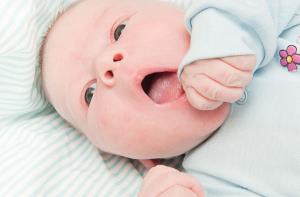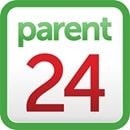
Thrush occurs when there is an overgrowth of yeast in your baby’s mouth. Candida is the yeast that usually lives in the mouth, intestines and genital area and thrives in warm, moist conditions. This yeast is usually kept in check by the intestinal ora, or healthy bacteria, that abound in our systems.
Sometimes, though, there is an overgrowth of it, and this is called thrush. White patches are a tell-tale sign. Thrush usually affects babies that are younger than two months but can also affect older babies.
How can I tell if my baby has thrush?
Thrush appears as milky white patches or spots on the inside of your baby’s cheeks or lips, on her gums or tongue. Unlike milk residue, this white coating doesn’t wipe off easily. It’s hard to scrape away and often bleeds slightly when removed.
Although it’s not dangerous, a yeast infection can make your baby’s mouth feel sore and cause a
few problems with feeding.
How did my baby get thrush?
- Your baby could have contracted thrush from your hands or even a family member’s hands.
- If you have vaginal thrush, your baby may become infected during delivery.• Bottles, teats and dummies that are not completely sterilised may be contaminated.
- Babies who are born to mothers with diabetes are susceptible to thrush, as are babies born with a cleft lip or palate.
- Antibiotics kill the bacteria that keep the yeast in our bodies in check, thus increasing the risk of your baby contracting thrush.
How do I treat it?
A mild case of thrush often goes away without treatment, but generally your doctor will prescribe a medicine or ointment containing antifungal properties that kills the Candida albicans fungus that causes thrush.
If you’re breastfeeding, you may want to use the ointment on your breasts as well, in order to avoid the infection being passed to and fro. Giving your baby a good probiotic, and taking one yourself, will also help re-establish the balance of ora and combat the yeast infection. Speak to your doctor or pharmacist to recommend a suitable one.
Sterilise all bottles, teats and dummies well. This will kill any yeast that may be living on them. Also, wash the toys that your baby chews on frequently in warm soapy water.
What if the thrush won’t go away?
Sometimes thrush can become very stubborn and resistant to the traditional treatment of antifungal medication or ointment. In this case try the following:
- Hang infected clothing in the sun and use the hot water cycle when washing. Sunlight kills yeast, cold water doesn’t.
- Ditto for the dishwasher – put it on the hot cycle when you’re doing the dishes.
- Towels and washcloths can harbour yeast, so use them once and then wash them in warm water. Hang them up in the sunlight to dry.
- Dump all stored breastmilk that was pumped during an active yeast infection.
- Add a bit of white vinegar to the bath water or washing machine as it helps kill yeast.




 Publications
Publications
 Partners
Partners














